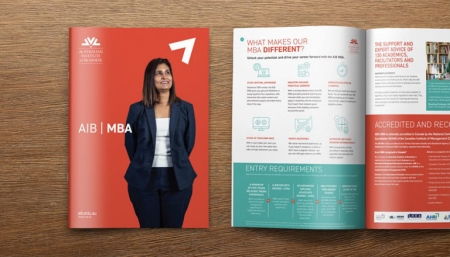5 steps for improving your Decision-Making skills

In the workplace, the ability to make a timely and effective decision with the information available to you is vital. That’s true for all of us, but nobody more so than leaders, who are called upon to make high level decisions about strategy, people and budgets.
Despite its importance, it’s not carried out effectively. A McKinsey Global Survey on decision-making in the workplace found that only 20% of professionals think their organisations excel at decision-making, and majority say much of the time they devote to decision making is used ineffectively.
This is in-part because decision-making can be overwhelming without a proper framework to guide it. To improve your decision-making skills, consider the following steps first as a starting point.
Filter out noises
No decision could be made without information. However, as a leader, you have an overwhelming amount of information coming in all the time. That includes details you’ve been told about a situation, pre-existing knowledge, statistics and even intuition. Sometimes those sources of data seem to be at odds; other times, they come together. Indeed, the amount of information people are taking daily are five times more in 2007 than in 1986.
When considering the information and data available to you, take a moment to examine their source and relevance. Is the push to upgrade your IT system coming from an objective analysis of its performance, or based on anecdotal evidence about the latest gadgets? When you’re considering someone for a promotion, are you looking at their performance metrics or being swayed by a personal connection or the opinion of others? The decision-making will be more accurate and timely if one can filter out noises and evaluate relevant information only.
Be conscious of your own bias
What we call intuition, or ‘gut feel’, is often an umbrella term for various sources of knowledge including pre-existing beliefs, value structures and emotion. Some of that is valuable, allowing you to draw on pre-existing knowledge and pattern recognition in an instant. However, those instinct reactions are subject to various behavioural biases that could lead to sub-optimal decisions being made. For example, it’s well established that when we already hold a belief, we readily retain information that supports that belief, and ‘skim over’ information that doesn’t. This is the so-called confirmation bias.
To avoid the tendency to confirm your pre-existing belief, ask yourself whether some of what you ‘know’ is in fact what you believe, or what you want to be true. When we rely too much on intuition, bias can creep in, leading to a poor decision. To achieve the best decisions, leaders should not only be aware of her/his own biases but also those of others.
Read more: Six Cognitive Biases That Affect Your Leadership
Perform a situational analysis
A situational analysis will enable you to understand the complexities of the decision, who could be affected by it and how. Consider the following questions:
- Why and who: Why does a decision need to be made, and who stands to be affected by it?
- Value vs cost: Do the costs of implementing the decision outweigh the proposed benefits, and what margin of error is there in the possible outcome?
- Evidence-based: Are you prepared to back up the decision in the face of opposition, and do you have the data behind you?
Focus on the end game
“People see what they aim at.”
At the end of the day, what do you want to achieve? It can be easy to give your attention to the intricacies of the situation at hand and lose sight of the larger context. A hiring or firing decision isn’t just about that person, but about the overall morale and productivity of the company. A purchasing decision may affect scalability or profitability. What is this decision intended to achieve, and will it achieve that? Rather than getting consumed by the minute details, keep purpose in mind to ensure timely decision-making.
Err on the side of action
Notwithstanding the above steps, try not to let the desire to gather even more information, or perform even more analyses, get in the way of making an actual decision. As a leader, part of your role is to take action and be accountable in the event that something goes wrong. While it can seem overwhelming to sift through everything, experience will allow you to quickly identify the relevant data and draw on previous context to perform the analysis. At the end of the day, the decision has to be made.
Decision-making can feel particularly challenging when the workplace is at its fastest and timelines seem short. Often, it’s just a case of being able to step back and weigh the pros and cons. Have you had to make a controversial management decision? What did you take into account?
Also read: The Characteristics of a Truly Influential Leader
This article was written by Tanya Ashworth-Keppel on behalf of the Australian Institute of Business. All opinions are that of the writer and do not necessarily reflect the opinion of AIB. The following sources were used to compile this article: Forbes, Entrepreneur and Inc.




